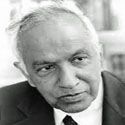Black Holes

Between the eighteenth and twentieth centuries, the idea that the death of a massive star might cause a profound gravitational collapse surfaced a number of times before a convincing evidence emerged. In the early twentieth century, when Einstein's General Relativity equations indicated the probability that certain stars could end as black holes, the prospect seemed so weird that even Einstein rejected the idea. It was widely believed that all stars gradually died out in much the same way: when a star exhausted its energy, it would become a “white dwarf” smoldering invisibly at a minimal level for eons.

In the 1930s a young astrophysicist, Subrahmanyan Chandrasekhar, challenged that view by demonstrating that there must be a maximum limit to the mass of a star destined to become a white dwarf. This _ Chandrasekhar limit_ as it became known, meant that the most massive stars would have a fate very different from white dwarfs. According to Chandrasekhar’s formulation, the core of a dying massive star would be so unimaginably dense with compressed electrons that the star would succumb to an irreversible gravitational collapse, a "black hole."
As convincing as Chandrasekhar’s equations were, his theory was promptly and rudely rejected in 1935 by the leading proponent of the white dwarf theory, Sir Arthur Eddington. Eddington’s prestige in astrophysics was such that most of the scientific community went along with his wrong-headed opinion, and Chandra’s great contribution was ignored for years.
Eventually, as evidence supporting the Chandrasekhar limit accumulated, he received the honor he deserved, including, in 1953, the Nobel Prize (with William Fowler).
